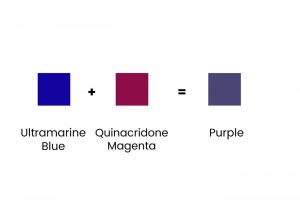Learning how to make purple is very easy, and although you saw it in elementary school, perhaps over time, you may have forgotten the technique of the color range to achieve it.
Going back to the tender times of childhood is lovely. Those years when the main concern was playing and spending time with friends in the garden or running down any street. One of the essential things they taught you back then was to mix pre-existing colors to form different ones. Maybe now you remember yourself with your hands full of paint, and you want to repeat these activities with your children, nephews, cousins, or grandchildren.
So that you learn how to make origami easily or mix colors and form any shade of purple you want, we show you these formulas, put batteries, and do it at once!
How to make purple
The purple color is achieved through the mixture of two colors: red and blue. That is true, but it is also true that earning a pure, bright and contrasting purple tone has a critical trick, and that is that you do not use paints with traces of yellow pigments, this will make your purple color opaque, and you will not reach the goal of making highlight on the surface you want to paint or put it on.
How to make purple with tempera
When you use paints, two combinations can make you achieve a gorgeous and striking purple. The first is the classic red + blue in equal proportions, although you could use 60% red and 40% blue if you want to have a very contrasting tone. In case you want it dark, reverse the percentages. The other formula can achieve with magenta and cyan tones, but you will have more difficulties with these two since very exact techniques are needed. Otherwise, it could make a gray or a dark brown.

How to make purple with modeling clay
Again you will need red and blue play-dough. Join them and start to knead them without stopping, making circular and uniform movements until you get it. If you want to achieve a lighter shade, add some white, pink, red, or magenta modeling clay. If instead, you want to darken it, use blue, dark blue, or a little black plasticine.
Also read: how to multiply fractions

